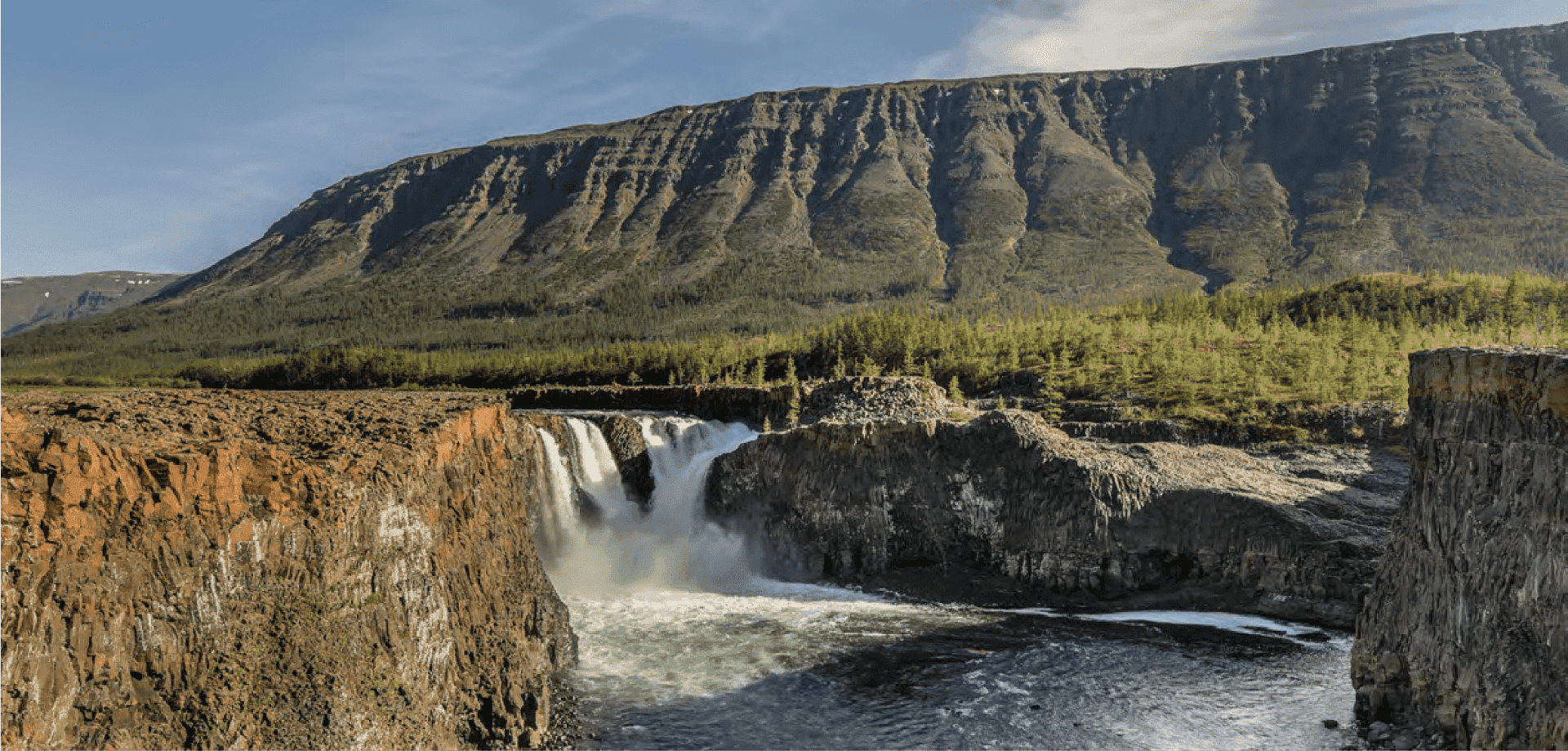Climate change and energy efficiency
Approach to climate change
Nornickel realises that climate change is one of the most significant and urgent global issues that poses a high risk to economic activity and society. As a party to the UN Global Compact, the Company fully supports the UN Sustainable Development Goals (SDGs), in particular SDG 13 Climate Action, and actively participates in joint efforts of the international community to combat global warming.
The Company unconditionally shares the principles of the Paris Agreement and supports its implementation in terms of keeping the global average temperature increase below 2 °C and making efforts to limit the increase to 1.5 °C. Nornickel actively engages with the scientific community, supporting and promoting nature and climate studies in the region, creating and expanding the climate monitoring system, and developing and implementing measures to reduce GHG emissions and adapt to climate change.
In developing strategic and regulatory documents and implementing climate change initiatives, Nornickel is guided by recognised international standards for building a corporate governance system and a climate risk management system, as well as standards for climate-related disclosures. These standards and guidelines include:
- TCFD Recommendations;
- GHG Protocol;
- ICMM principles;
- IRMA’s Standard for Responsible Mining;
- Global Industry Standard on Tailings Management (GISTM);
- requirements of ESG agencies and ratings (EсoVadis, Sustainalytics, MSCI, CDP);
- recommendations of the Bank of Russia on disclosure by public joint-stock companies of non-financial information related to their operations;
- methodological recommendations and indicators of the Russian Ministry of Economic Development on climate change adaptation.
The Company plans to issue its first public climate change report in 2023. The report will be drafted in accordance with the TCFD Recommendations, and aims to demonstrate the progress made towards achieving the goals of the Paris Agreement. The report will reflect the Company's key projects and initiatives for effective adaptation to climate change and its effects, including a description of physical risk assessment projects and transition risks and opportunities.
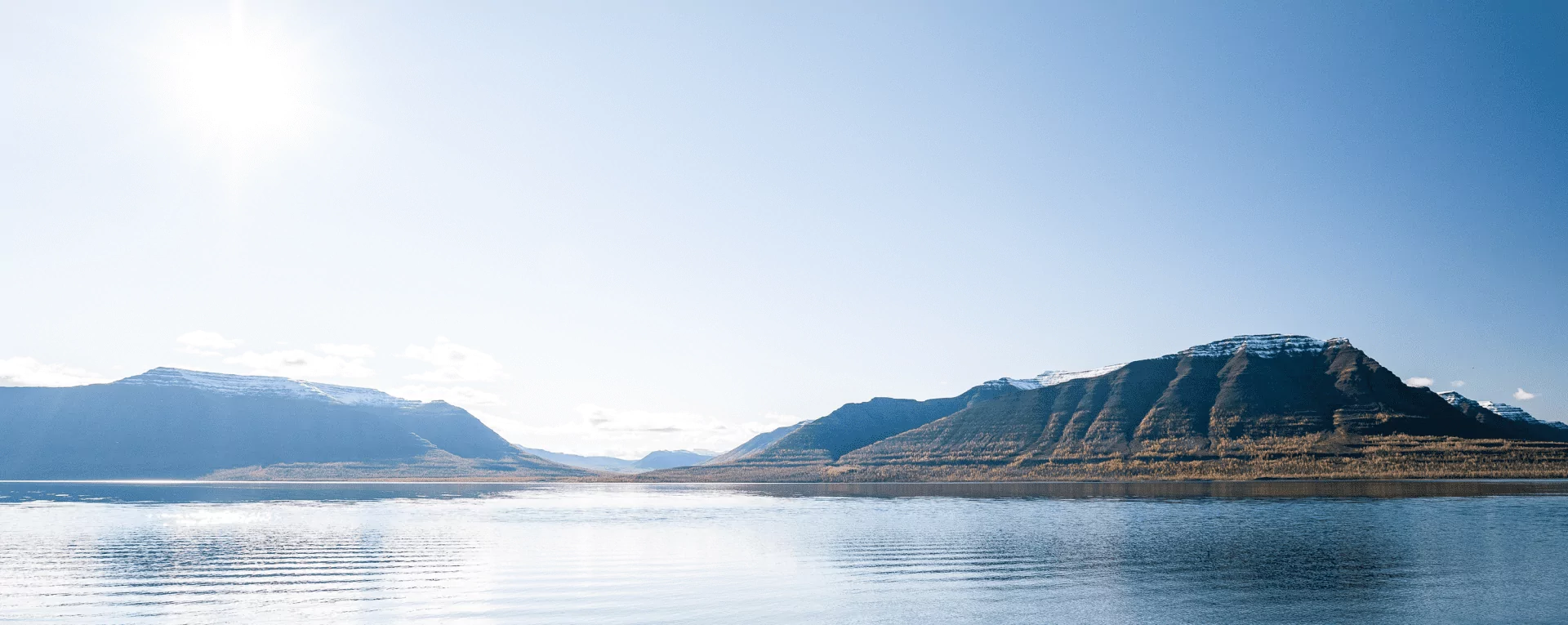
Climate change impact on Nornickel’s strategy
In line with its Environmental and Climate Change Strategy, Nornickel has set a number of goals and commitments aimed at improving control over climate change risk management and performance in this area.
Nornickel's climate change targets
- Take into account climate factors as part of our risk management system
- Continue to work on reducing GHG emissions in the long term
- Promote low carbon transition by supporting R&D to search for and scale up in-novative solutions and encouraging intra and cross-sectoral dialogue on climate change
- Comply with globally recognised climate disclosure standards
- Strive to increase the share of low-carbon energy consumption
Highlights and results
Key achievements
Key climate change achievements in 2022
- Proprietary global economy and climate change scenarios developed to assess climate change risks and opportunities;
- The project to assess physical risks scaled up: climate change modelling across the Company's footprint through 2050, identifying key climate risk factors and pilot assessment of their impact on the production assets of Norilsk, Kola, Trans-Baikal and Energy Divisions;
- Transition risks and opportunities identified and pilot assessment conducted;
- A methodology developed to calculate the internal carbon price;
- Upstream Scope 3 GHG emissions calculated for the first time;
- The first stage of a building and structure monitoring system (foundations and foundation beds on permafrost soils) deployed in the Norilsk Industrial District.
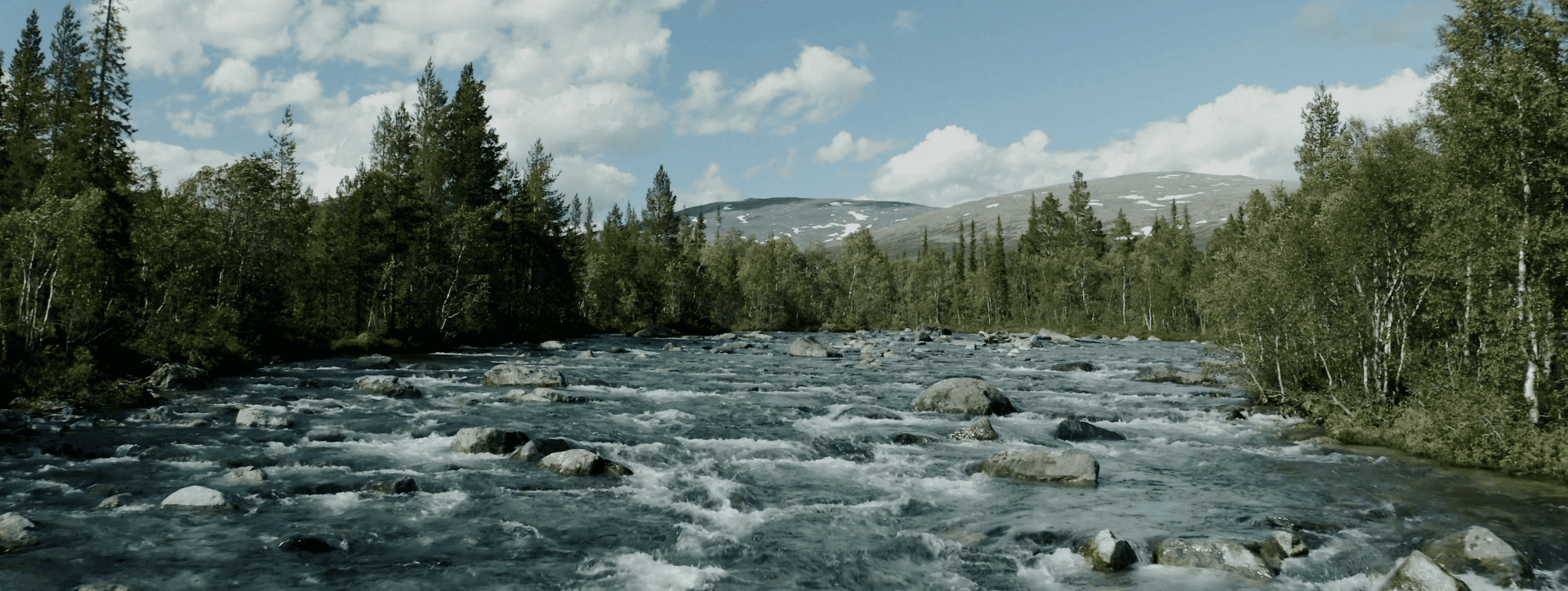
Highlights GHG data is presented for 2022 and includes Norilsk Nickel Harjavalta.
Global Warming Potential (100 years) based on ISO 14044, kg of СО2 equivalent per kg of metalData is presented for 2021 and includes Norilsk Nickel Harjavalta.
Global Warming Potential (100 years) based on ISO 14044, kg of СО2 equivalent per kg of metal in the productData is presented for 2021 and includes Norilsk Nickel Harjavalta.
In the process of implementing the Buildings and Structures Monitoring System project:
Approaches to climate change management
Nornickel is developing a climate change management system, which includes the development and approval of by-laws, allocation of responsibilities between management bodies, and assignment of their functional duties on climate change issues.
Climate Change Policy
The Company has a Climate Change Policy setting out the basic principles, commitments and initiatives related to the adaptation to climate change for all business units of the Group.
The Climate Change Policy forms the foundation of the corporate sustainability programme, which creates the conditions for energy efficiency and reliance on renewable energy and green technologies, including carbon dioxide capture and recovery as well as energy storage technology.
The Company has the following key obligations under the Policy:
- develop and regularly update its climate change strategy Part of the Environmental and Climate Change Strategy ;
- implement management systems and risk management tools to respond to climate change and have them integrated into the risk management system in line with the TCFD requirements;
- organise regular audits of climate change risk management and publicly disclosed climate change indicators;
- identify and measure the contribution of the Company's products to the low-carbon economy in the process of organisational life-cycle assessment;
- review commercially viable opportunities to reduce carbon footprint, including the use of assessment tools for responsible value chain management and the development of green technology partnerships to accelerate the decarbonisation of the Company's operations;
- attract and effectively allocate capital to implement the Company’s climate change strategy;
- promote advance practices and innovations;
- apply GHG emission offsetting mechanisms, including natural climate solutions (including conservation and restoration of forests and other ecosystems that absorb carbon dioxide) where the application of these solutions appears to be the most feasible and commercially viable solution;
- adopt key performance indicators (KPIs) related to climate change goals for managers and employees of the Company;
- expand engagement and partnership with stakeholders on climate change agenda;
- ensure transparent and regular disclosure of GHG emission targets and other relevant indicators and aspects in accordance with the Russian laws and best global standards.
Responsibilities
The Board of Directors reviews and approves our Environmental and Climate Change Strategy and risk appetite and supervises the risk management framework for climate change. In 2021, the Board created the Sustainable Development and Climate Change Committee to ensure a deeper focus on these matters.
The Committee meetings discuss the following matters:
- integration of sustainability principles, including climate change, into the Company's operations;
- development and implementation of a strategy on sustainable development and climate change;
- risk management and internal control in the realm of sustainable development and climate change;
- the Company’s internal reporting and disclosures on sustainable development and climate change;
- external audit of the Company’s sustainable development and climate change reports and activities.
The implementation of climate change risk management measures and procedures is the responsibility of the Company's Management Board and the Management Board's Risk Management Committee. Members of the Board agree upon parameters of the Company's risk appetite, including those relating to climate change, and make recommendations to the Board of Directors regarding their approval. The key risks, including climate change threats, are reviewed on a quarterly basis.
Details of the climate agenda review by the Management Board’s Risk Management Committee and the Sustainable Development and Climate Change Committee of the Board of Directors will be disclosed in the climate change report.
The Vice President for Investor Relations and Sustainable Development is responsible for setting ambition and vision for climate change and developing and monitoring the implementation of the Company's Climate Change Policy.
Since 2022, the Sustainable Development Department's functions include methodological support for risk owners to incorporate climate risk factors into risk management. Respective changes have been incorporated into the Regulations on the Sustainable Development Department and the Risk Management Regulations. Dedicated units of the Head Office, branches and Group companies are responsible for certain aspects of the Climate Change Policy and the Environmental and Climate Change Strategy within their scope For full information on responsibilities and functions of the Company’s governance bodies and units, please see PJSC MMC Norilsk Nickel’s Climate Change Policy. . The Company's branches, standalone business units and divisions develop proposals regarding the Environmental and Climate Change Strategy implementation, ensure the availability of financial and other resources related to the Environmental and Climate Change Strategy implementation, and identify and assess physical climate change risks.
Nornickel's Roadmap to comply with the TCFD recommendations
In 2021, Nornickel approved the Roadmap to comply with the TCFD Recommendations for 2022 – Q1 2023. The roadmap includes more than 50 activities aimed at improving strategic and operational management of climate change issues, including risks and opportunities, achieving TCFD-recommended targets and indicators, and generating quality public reporting.
Core elements of the Roadmap to comply with the TCFD Recommendations
Climate change risks and opportunities GRI 201-2
In the process of implementing the Roadmap to comply with the TCFD Recommendations and meeting the targets set in the corporate Environmental and Climate Change Strategy, Nornickel is building a framework for managing climate change risks and opportunities. The Company identifies both physical risks associated with the impact of chronic climate change and abnormal weather events, and transition risks and opportunities associated with the changing market, regulatory, technological and political environment during the transition to a low-carbon economy. In this context:
- shared climate change scenarios (pathways) apply The Company’s own scenarios for the assessment of risks and opportunities correspond to the temperature ranges of the SSP used for physical risk assessment. ;
- the Company is developing approaches to assess the impact of physical risks and transition risks and opportunities on the Company's operations and financial performance;
- mechanisms and plans are being developed to mitigate and adapt to these risks.
Building a framework for managing climate change risks and opportunities based on shared pathways. SSP — Shared Socio-Economic Pathways.
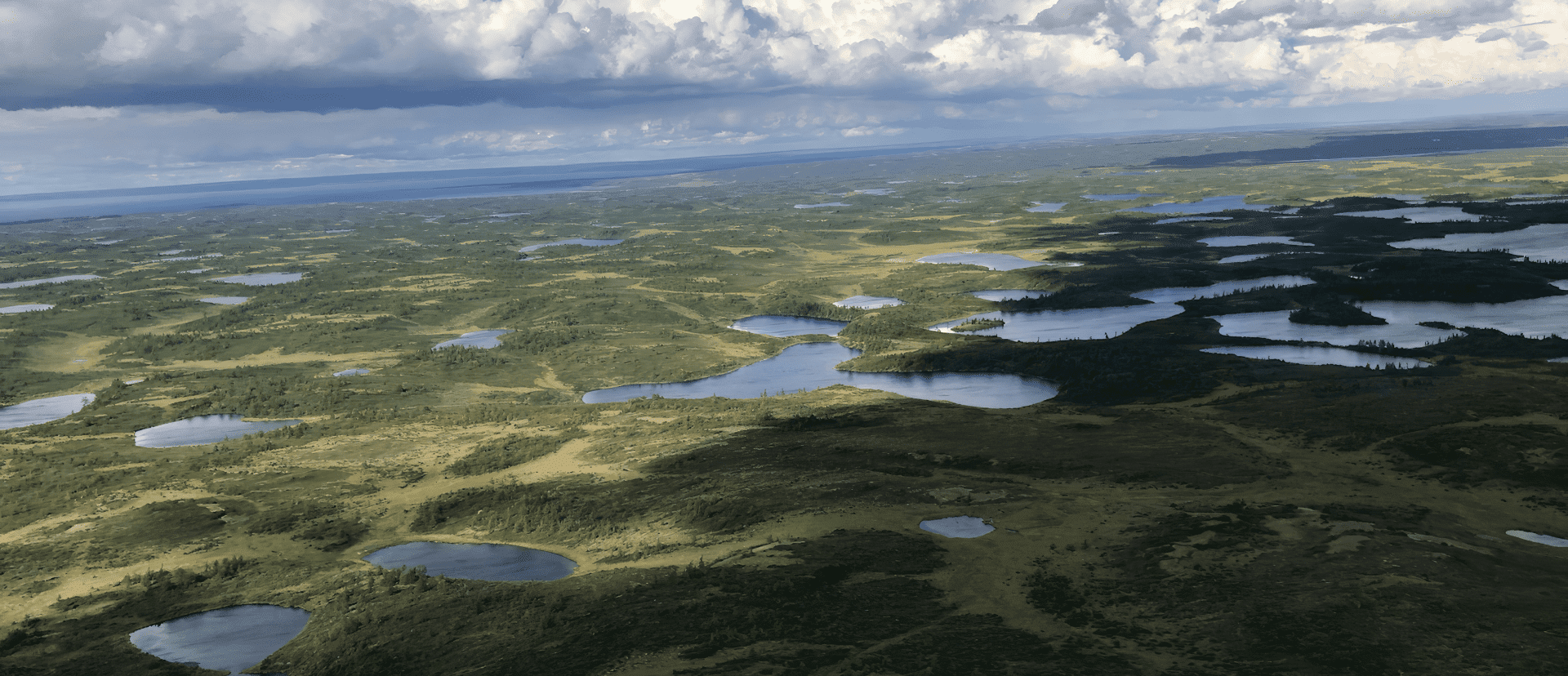
Physical risks
For climate change modelling, the Company chose three shared global climate scenarios (pathways) developed by the Intergovernmental Panel on Climate Change (IPCC) – SSP1-2.6, SSP2-4.5 and SSP5-8.5 and CMIP 6. Coupled Model Intercomparison Project
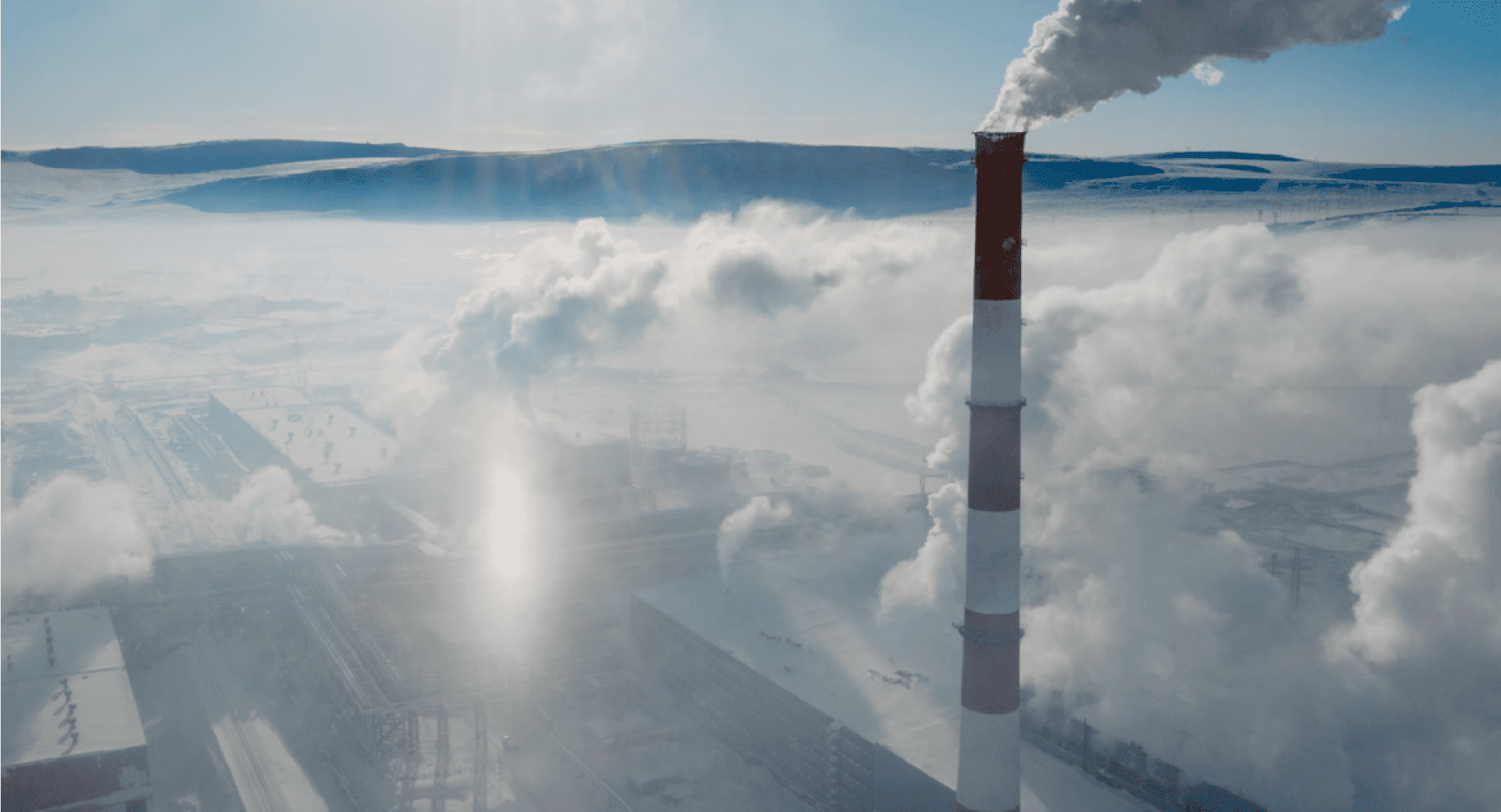
SSP 1-2.6 SSP1-2.6 is an optimistic scenario: greenhouse gas emissions are expected to decline and reach zero by 2055, with an average annual temperature increase of 1.8 °C by 2100. Society makes the transition to more sustainable practices, with the focus shifting from economic growth to general well-being. Investments in education and health will be growing, and inequality will be declining.
SSP 2-4.5 SSP2-4.5 is a realistic scenario: the current rate of increase in greenhouse gas emissions will be maintained, with carbon neutrality achieved by 2100. Socio-economic factors are changing in line with historical trends. Progress towards sustainable development is slow, with an even growth of the pace of development and incomes. According to the scenario, the average annual temperature will increase by 2.7 °C by the end of the century.
SSP 5-8.5 SSP5-8.5 is a pessimistic scenario: the current level of GHG emissions will double by 2050. The world economy will demonstrate a rapid growth and development through the extensive use of fossil fuels and increased energy consumption. By 2100, the average annual temperature will increase by 4.4 °C.
The initial phase of the work involved retrospective analysis of climate change since the 1960s supported by experts from the Institute of Atmospheric Physics of the Russian Academy of Sciences to determine the climate trends already occurring in the Company's regions of operation. Modelling showed an upward trend in the average annual temperature in all divisions of Nornickel. In Norilsk, for example, the temperature rose by 0.6 °C every decade, suggesting that the Paris Agreement milestone had already been passed in the region by 2022.
Retrospective analysis was followed by scenario modelling of possible changes in climate risk factors through 2050: the SSP1-2.6, SSP2-4.5 and SSP5-8.5 global climate scenarios were “localised” to all regions where the Company operates, including Finland. Assessment of climate risk factors was carried out for the Russian divisions – Norilsk, Kola, Trans-Baikal and Energy.
The key climate change risk factors identified for all areas across Nornickel's footprint are the growing average annual temperature, thawing of permafrost soils, increase in extreme precipitation and flooding, and greater frequency and intensity of thunderstorms.
Some of the identified climate change risk factors, such as thawing of permafrost soils, may lead to key risks.
Permafrost monitoring
In 2021, as a way of adaptation to risks associated with permafrost thawing, Nornickel launched a project to develop and deploy a real-time foundation condition monitoring system for buildings and structures located in permafrost soils in Norilsk using advanced automated observation tools and a specialised IT platform.
The monitoring project is focused on using automatic equipment to keep track of temperatures in permafrost soils around bases, deformation behaviour in foundations, and temperature and humidity levels in crawl spaces. It seeks to help prevent accidents at Nornickel’s industrial facilities and, later on, local housing infrastructure and proactively identify any hazardous defects or deviations that might result in damage to the buildings and structures or their elements, with special safety criteria developed for all monitored indicators.
During 2022, an information and diagnostic system was established and put into operation, and comprehensive inspections were conducted at 154 facilities, each with surveillance programmes and safety criteria. For effective data transmission and processing, a control room was deployed and a transparent business process for supervision, monitoring and inspection of buildings and structures was built, including the development of a geotechnical monitoring standard.
As at the end of 2022, 17 assets of the Company were connected to the system and around 700 facilities were being monitored.
Transition risks and opportunities
To assess in its strategic planning the risks and opportunities arising from the global energy transition, Nornickel has developed three proprietary long-term scenarios for the global economy and climate change through 2050.
The global economic and climate change scenarios were drafted in consultation with the Institute of Economic Forecasting of the Russian Academy of Sciences. The estimated changes in global temperature under these scenarios are consistent with the three IPCC scenarios (SSP1-2.6, SSP2-4.5 and SSP5-8.5) that have been adopted by the Company to assess the physical climate change risks. The scenarios were developed based on an analysis of some 190 available public scenarios from leading providers in this area (International Energy Agency, World Energy Council, International Renewable Energy Agency, OPEC, Bloomberg, NGFS, Shell, BP, DNV, etc.).
The first scenario, "Rapid Transformation" (25% probability), is aimed at achieving the Paris Agreement goals, the second, "Sustainable Palladium" (70% probability), focuses on maintaining current social, economic and technological trends, and the third, “Global Growth” (5% probability) involves abandoning efforts to curb climate change, with further economic growth to be supported by hydrocarbons, mainly in developing countries.
Sustainable Palladium became the baseline scenario, which provides for traditional industries to remain centre stage along with the green economy. In particular, ICE vehicles will retain a large market share, contributing to a steady demand for palladium in the long run. The Company will apply the other two scenarios in stress-testing of risks associated with climate change. In addition, a scenario parameter monitoring tool was developed to record actual deviations from the baseline.
The scenarios were approved by the Risk Management Committee of the Management Board and reviewed and recommended for further risk assessment by the Sustainable Development and Climate Change Committee of the Board of Directors.
Greenhouse gas emissions GRI 305-1, 305-2, 305-4, SASB EM-MM-110a.1
The Company regularly assesses greenhouse gas emissions (Scope 1 and Scope 2) in accordance with the GHG Protocol methodology. The calculation of emissions for the Group takes into account the following greenhouse gases: carbon oxide (CO2), nitrous oxide (N2O), methane (CH4), with no or insignificant emissions of other greenhouse gases. The quantitative assessment of Scope 1 GHG emissions also includes the Company’s estimated prospective GHG emissions associated with the implementation of the Sulphur Programme.
Based on the results of 2022, actual direct and indirect GHG emissions (Scope 1 and 2) decreased by 0.5 mt of CO2 equivalent y-o-y to a total of 7.7 mt of CO2 equivalent, including the supply of heat and electricity to retail customers. The Sulphur Programme GHG emissions provision totalled 2.2 mt of CO2 equivalent. The Company's actual direct GHG emissions amounted to 7.2 mt of CO2 equivalent and indirect energy emissions, to 0.5 mt of CO2 equivalent. Indirect energy emissions were calculated using the location-based method, taking into account regional coefficients. Bystrinsky GOK, a key facility in Nornickel's Trans-Baikal Division, entered into a deregulated bilateral power purchase agreement for the supply of 118.3 mln kWh of electricity in order to reduce the climate impact.
In 2022, the inventory of equipment that is a source of GHG emissions was updated for the extended scope of enterprises.
The reduction of GHG emissions (Scope 1 and 2) is due to the following reasons:
- optimisation of in-plant operation of the heat and power plants;
- optimisation of hydropower plant load regimes (increasing the share of electricity output from hydropower plants);
- weather conditions – in 2022, the heating period was shorter and the ambient air temperature during the heating period was higher than in 2021.
The intensity of actual GHG emissions (Scope 1 and 2) was 6.5 t of CO2 equivalent per RUB 1 mln of consolidated IFRS revenue.
In 2022, the Company continued to quantify indirect GHG emissions (downstream Scope 3) to the extent related to product sales. Under the GHG Protocol, these emissions are associated with transportation from the Company's production assets to the customer and the first stage of product processing.
In line with the principle of continuous improvement of calculations, a number of GHG emission factors was updated based on the best available sources for the production of metals and concentrates sold by the Group. For the purpose of comparison, the data for 2021 was recalculated using emission factors applied in 2022. The Group's downstream Scope 3 emissions for 2022 totalled 3.9 mt of CO2 equivalent, down 3% y-o-y. The main drivers of the reduction are lower sales volumes and the geographical and sectoral structure of sales. The volume of downstream Scope 3 emissions is relatively small compared to global metals and mining peers, reflecting the structure and size of the Group's product portfolio.
Upstream Scope 3 GHG emissions
In 2022, the Company made its first public disclosure of a quantitative estimate of upstream Scope 3 GHG emissions, covering all emission categories required by the GHG Protocol. The bulk of the emissions are related to the purchase of goods and equipment from third-party suppliers and to energy and fuel consumption (to the extent not included in Scope 1 and 2).
In 2022, total emissions amounted to 1.8 mt of CO2 equivalent.
Comparison with global metals and mining peers
Source: the Company’s analysis based on the most up-to-date available data for 2021–2022. Peers include leading global diversified metals and mining companies: BHP Billiton, Rio Tinto, Vale, Glencore, and Anglo American
Carbon footprint of products
Assessment of products’ carbon footprint in 2021 Including the Sulphur Programme provision implemented and Norilsk Nickel Harjavalta.
The carbon footprint of MMC Norilsk Nickel's products is calculated in accordance with ISO 14067:2018, ISO 14040:2006, ISO 14044:2006, GHG Protocol Product Life Cycle Accounting and Reporting Standard methodology, and LME passport guidance – Nickel Institute guidance for nickel producers to calculate their GHG emissions.
In 2022, the Company made a number of technical updates to the model for calculating a product's carbon footprint:
- using corporate directories to update significant categories in order to calculate average carbon intensity ratios;
- using the SAP ERP system as a source of information on the allocation of the actual use of resources.

Scope of products’ carbon footprint calculation
End product manufacturers:
- Polar Division
- Kola MMC
- GRK Bystrinskoye
- Norilsk Nickel Harjavalta
Manufacturers of raw materials / resources or services
- Medvezhy Ruchey
- NTEC
- Norilsk Production Support Complex
- Norilskgazprom
- Norilsktransgaz
- Murmansk Transport Division
- Norilsknickelremont
In the medium term, Nornickel plans to deploy an end-to-end automated system for calculating GHG-related indicators based on a unified methodology using a dedicated IT platform. This solution will allow for more efficient and accurate carbon accounting of all material flows, process stages and resources across the Group. In addition, the automated process will make it easier to provide climate information to all stakeholders in a timely manner.
Internal carbon price
In 2022, Nornickel started developing the internal carbon price – a new management tool enabling the Company to consider climate change risks when planning future operations.
Energy consumption and efficiency SASB EM-MM-130a.1
As Nornickel Group’s key production facilities operate in the harsh climatic conditions of the Far North, the Company's fuel and energy services are tasked with a critical mission of ensuring a reliable and continuous power supply to households and production facilities.
The most essential projects that we are implementing to improve equipment reliability and energy efficiency, as well as to ensure increase in production output, are:
- replacement of main hydroelectric units at Ust-Khantayskaya HPP and power units at CHP-2 and CHP-3 in Norilsk;
- reconstruction of the backup diesel fuel storage facilities at CHP-1, CHP-2 and CHP-3, boiler in Dudinka as well as at Ust-Khantayskaya HPP and Kureyskaya HPP;
- modernisation of the electricity, heat and water supply networks;
- construction of stormwater and industrial waste water treatment facilities;
- modernisation of the gas transmission and gas distribution networks;
- infrastructure modernisation and development in Tukhard;
- building five new gas wells at the Pelyatkinskoye Gas Condensate Deposit;
- comprehensive oil terminal reconstruction programme: Norilsk, Dudinka and Kayerkan oil depots.
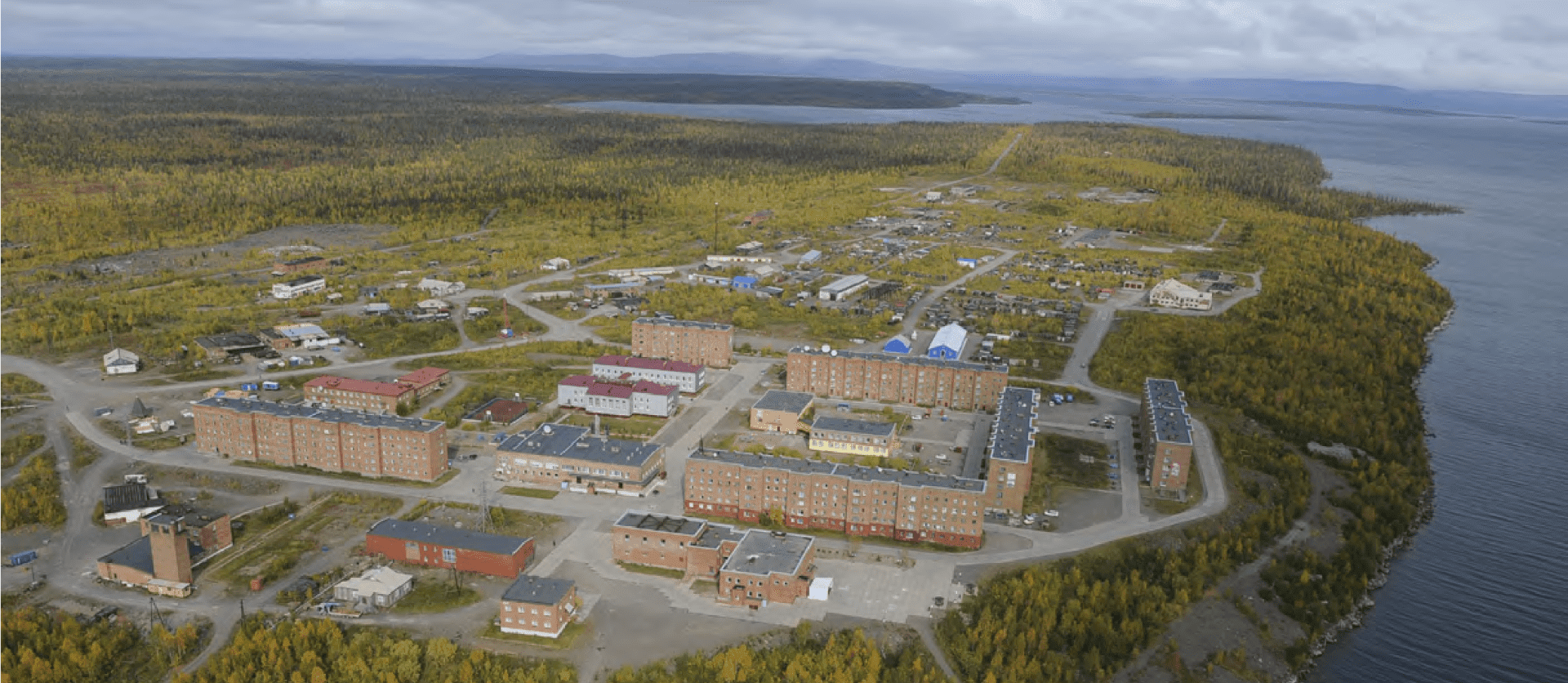
Utilisation of renewable energy sources
Nornickel takes a comprehensive approach to energy infrastructure development, combining the objectives of improving the reliability of production assets with those of reducing GHG emissions. Nornickel makes continuous efforts to reduce the consumption of such energy sources as diesel fuel and coal, and develop alternative energy – hydropower. To that end, Nornickel works consistently to provide its operations with more economical and green energy sources, including in the long term.
The use of renewable energy, such as solar, geothermal and wind energy, is limited by harsh climatic conditions, the length of the polar night and a number of other natural features of the regions where the Company operates. Nevertheless, Nornickel keeps looking for alternative solutions to improve its energy efficiency. In 2022, the Company conducted an analysis of opportunities to switch to green energy sources to replace its own conventional gas power generation facilities in the Norilsk District in the long term through 2050.
The analysis, carried out for the Norilsk region, revealed that most of the technologies considered for achieving zero carbon emissions from the Norilsk District's own power generation facilities in the long term to 2050 cannot be implemented under current conditions. Natural and climatic constraints of the Arctic Zone, the requirements of an isolated power system, and the Arctic design of equipment significantly limit the use of direct carbon emission reduction technologies in the Norilsk District.
At the moment, the most economically viable option is the use of carbon capture, transport and storage technologies. However, the Company has yet to confirm the positive experience with such technologies at high-capacity gas heat and power plants.
In addition, Nornickel is exploring the possibility of using ground- or water-based small modular nuclear reactors in Norilsk.
Total energy consumption by Nornickel Group, TJ GRI 302-1, 302-3
Fuel consumption by Group companies by type of fuel, TJ GRI 302-1
In 2022, total fuel consumption by Group companies decreased by 6.2% compared to 2021 due to a lower gasoline and jet fuel costs because of the sale of NordStar Airlines outside the Group's perimeter in 2022. A 3% increase in electricity consumption by 2021 was due to an increase in the consumption by the key operations in the Norilsk Industrial District. Due to higher monthly average temperatures in 2022, there was a 6% reduction in total heat and steam consumption compared to 2021.
Electric power and heat consumption by the Group companies, TJ GRI 302-1
Fuel and energy savings resulting from energy consumption reduction and energy efficiency improvement initiatives in 2022 GRI 302-4
The Company’s divisions annually develop and implement initiatives to save fuel, energy, and water.
In 2022, the implementation of operational and technical measures to reduce energy consumption and improve energy efficiency resulted in savings of 362.7 TJ, with the costs totalling RUB 2,2 bn. The savings were achieved due to the measures to switch to LED lighting, improving thermal insulation through the use of modern materials for piping, window and door openings, the use of automatic heat control systems based on changes in ambient temperature, and by introducing automated energy accounting systems for plant workshops.
